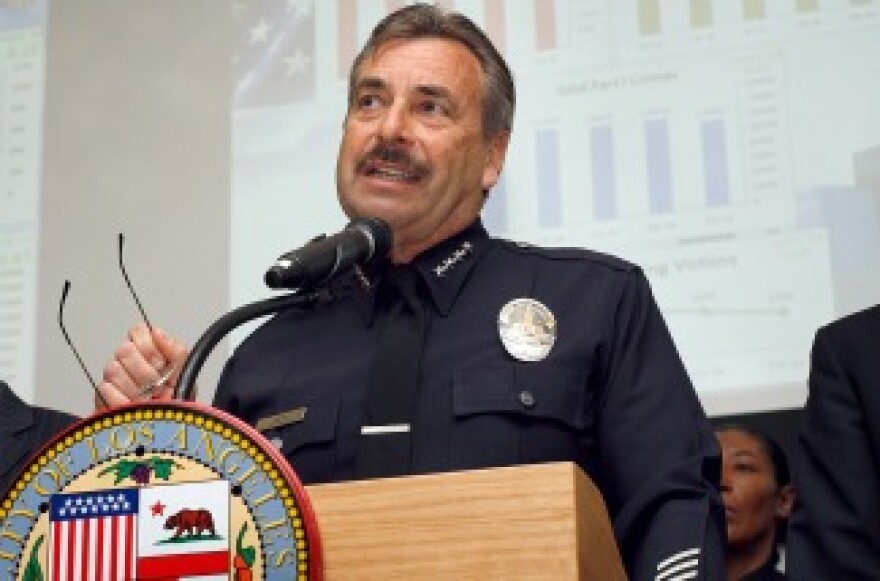With our free press under threat and federal funding for public media gone, your support matters more than ever. Help keep the LAist newsroom strong, become a monthly member or increase your support today.
LAPD chief warns of longer 911 response times under realignment

Los Angeles Police Chief Charlie Beck Monday said California isn’t providing enough money for the L.A. County Probation Department to supervise former state prison inmates under its realignment plan. Beck said that’s forcing him to reassign 150 officers.
“Those 150 officers are going to come right out of the streets of Los Angeles,” Beck said.
The chief said the shift in resources would hurt the department’s ability to respond to some crimes.
“911 calls will take longer to answer,” Beck said.
Under California’s realignment plan, county probation officers instead of state parole agents will supervise thousands of non-serious, non-violent criminals after their release from prison. The city of L.A. expects the largest number – more than 4,000 over the next three years. In addition, people who commit non-serious non violent crimes in the future will go to county jails instead of state prisons. California made these changes in response to a federal court order to reduce prison overcrowding.
Los Angeles Mayor Antonio Villaraigosa on Monday called on Gov. Jerry Brown to provide more money for cities to handle the wave of state prison inmates who’ll return home
“The idea that there’s not a penny for this city or other cities makes no sense,” Villaraigosa said.
The state is providing money to county probation departments. But probation officials concede that there won’t be enough money for them either.
Gov. Jerry Brown has said he’ll seek to place on next year’s ballot an initiative to provide more and stable funding.
Its not just politicians and law enforcement leaders who are concerned about realignment.
“For my particular job, it presents a huge problem,” Guillermo Cespedes said. Cespedes heads Villaraigosa’s Gang and Youth Development Office. Before that, he worked with at risk youth in the nonprofit sector.
The former activist thinks about the young gang member returning from prison to his old neighborhood who’ll receive less supervision and fewer rehabilitation services.
“Every time we see someone come back into a gang reduction zone from state prison, the dynamics change and there’s a potential for violence to escalate,” Cedspedes said.
Connie Rice of the Advancement Project likes to point out that California’s record of helping former prison inmates is spotty, at best. 70 percent ended up back behind bars.
“The state never did rehabilitation,” Rice said.
She said the state is providing even less money to cities and counties to do the job of helping people who are often illiterate, mentally ill and possess no job skills.
Rice said she supports realignment if done correctly.
“I absolutely agree that our prisons had too many folks in them who didn’t need to be in there,” she said. “But it’s very important how you let them return to the community.”
Under the state’s current realignment plan, she predicted, that process will be rockier than ever.
Beck echoes that sentiment. He said California realignment saddles police and jails with more responsibilities without providing the funding.
“Ya know, we often talk about what will be the final straw that breaks the back of public safety,” Beck said. “This is not a straw, this is a load of hay and its landing on Los Angeles.”
This story has been updated since it was originally published.








